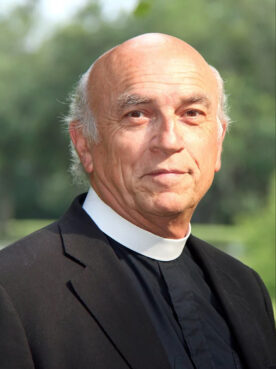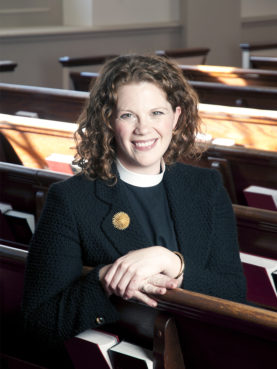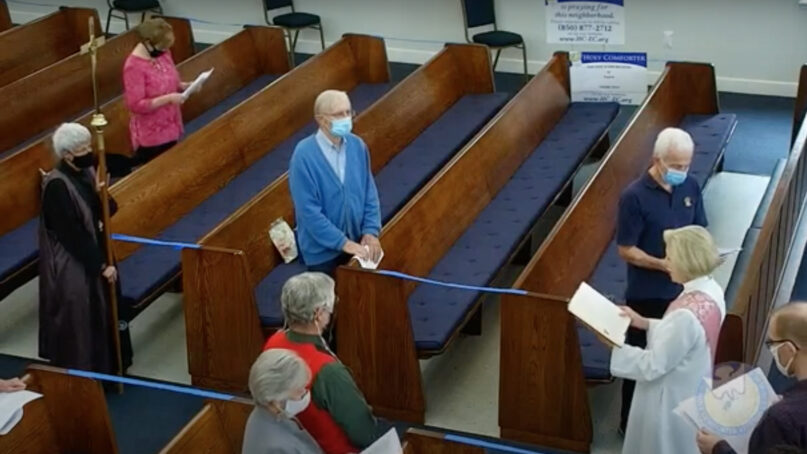(RNS) — On Christmas Eve, members of Holy Comforter Episcopal Church in Tallahassee, Florida, will gather in the parking lot for a service that’s part tailgate, part worship and part family reunion.
Holy Comforter has been hosting indoor worship with strict limits on attendance since the beginning of the pandemic. But at this time in the liturgical calendar and this time in the pandemic, said the Rev. Jerry Smith, rector of Holy Comforter, people need to be together.
“We’re now Zoomed out. That’s part of the problem,” said Smith. “We don’t want to sit in front of the TV screen anymore. It’s not the same as being in each other’s presence.”
While many Christian congregations have moved services online and found new ways to build virtual communities, faith remains a tangible, in-person experience at its core for many.
For some churches, that’s meant going to court to challenge restrictions on in-person gatherings. For others, it means doing the best they can and keeping the faith till they can all be together again.
Holy Comforter’s leaders have followed advice from the federal Centers for Disease Control and Prevention and local medical professionals to create services that are safe. Early in the pandemic, only 10 people were allowed in the church for one service a week. More recently, the church moved to three services, with a 25-person limit. The church also livestreams services.

The Rev. Jerry Smith. Photo courtesy of Holy Comforter Episcopal Church
Having a few more people in person gives people a taste for what they have been missing, said Smith.
“They can’t pass the peace, but we have this time in the liturgy where people are waving and smiling at each other,” he said. “There’s a need to do that. I think the danger is that people get so frustrated that they throw caution to the wind. And we can’t let them do that.”
The pandemic has been particularly difficult for immigrant churches, said the Rev. Dieufort Fleurissaint of the Haitian Evangelical Pastors Association. Already facing economic challenges, a lack of resources and sometimes issues relating to their citizenship status, many immigrants regard church as one place where they can gather to share their burdens while rejoicing as well. They rely on singing and prayer, as well as hugs and embraces from each other, to keep their faith strong.
Just holding hands to pray can be powerful, he said.
“We are a community of fellowship,” he said. “It brings great spiritual benefit when we can gather together.”
The Rev. Laura Everett, executive director of the Massachusetts Council of Churches, has been reminded in the pandemic that Christianity is not just a set of ideas, but a set of practices and relationships that have been muted or changed by the pandemic.
The past nine months have been the longest that Everett has been absent from a church since she had a conversion experience as an eighth-grader. She misses the chaos and the mess of worship services but particularly the common, small acts of grace that come from in-person connection: putting her hand on someone, for instance, who has been sick, and praying for their healing.

The Rev. Laura Everett. Courtesy photo
“I have missed that echo of voices when we say the Lord’s Prayer, those well-worn words where my voice will drop out sometimes because I am so tired or so sad and other people carry the prayer for me,” she said.
“I know that can happen on Zoom and it does. But I miss sitting next to them. I miss the smell of old lady perfume and the sound of cough drops being unwrapped, the smell of incense, the call and response and talk back.”
Kevin Singer attends and helps lead worship at a campus of Vintage Church in Raleigh, North Carolina. The church, made up of mostly younger families and young professionals, has a contemporary worship style and meets in the gymnasium of a Christian school.
The church has been meeting in person, with chairs set up in clusters, Singer said, and people conscientiously keep their distance.
That makes the longing for community and connection even deeper, he said. “There is always that feeling of, I wish I could take this mask off and give you a hug,” he said.
People dart out of the building after services, instead of hanging around for what he called “the mingling of souls,” which happens in more normal times. And during the service, he feels as if they are all passive observers rather than participants. He likens it to “Christian karaoke.”
Singer also said that COVID-19 has made people suspicious of each other as a potential threat to their health. That makes the intimacy and vulnerability among friends in a congregation difficult.
“You can’t be vulnerable without the sense that I should not be this close to you,” he said.
The Rev. Constance Cherry, professor emeritus of worship and pastoral ministry at Indiana Wesleyan University, said many worship leaders and pastors are concerned about the long-term effects of moving from in-person worship to online services. Will people return, she wonders, when bans are lifted? Or will they prefer to take part online?
Worship in many Protestant churches, especially evangelical churches, Cherry said, has become a spectator experience, something “leaders do for the congregation.”
“What you have ended up with, in hundreds of churches and across denominations, are people up front, on a stage, producing worship for the pleasure of the people,” she said. “To me, this has put an exclamation point on a problem we already had.”
Vanessa White, associate professor of spirituality and ministry at Catholic Theological Union in Chicago, said online worship has separated people not only from each other but from the rhythms of worship — of getting dressed, leaving the house and going to a sacred space at a specific time with a specific group of people.
She goes to her parish to serve as a lector one week out of the month, reading some of the Bible texts for Mass. The other weeks, she watches online — but not in casual clothes from her couch. Instead, she tries to set up a sacred space at home, as she does when leading virtual retreats.
Before Mass starts, she clears off her living room table and puts a cloth on it, then a candle and cross. She dresses up and picks up a book of Bible readings, so she’s ready to take part. White said that worship involves signs and symbols, along with prayers and other actions.
That’s something she wants other worshipers to remember.
“We are people of sign and symbol,” she said. “Just because you are in this virtual time frame, it’s like we are throwing out the signs and symbols. We don’t have to do that.”





